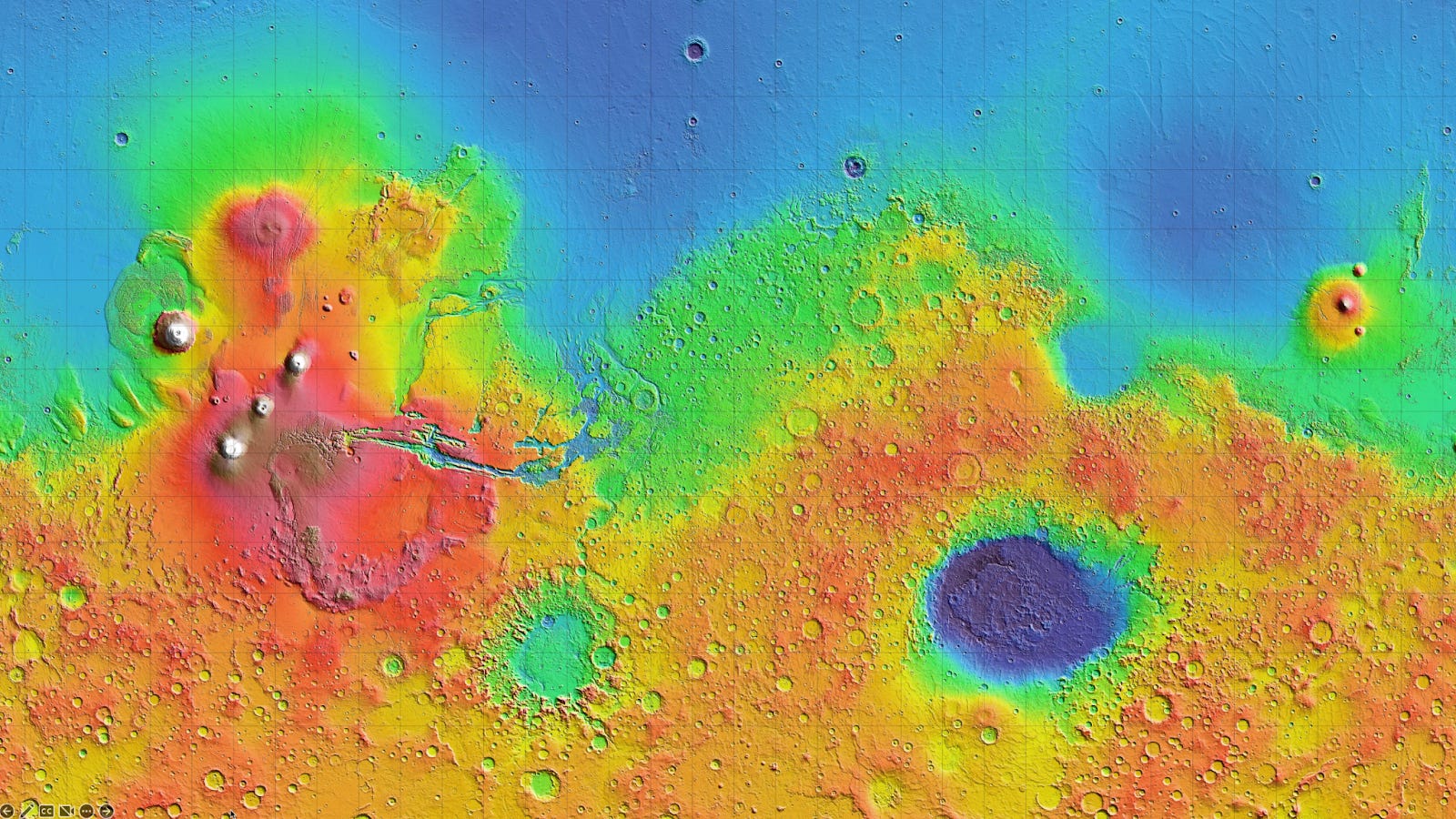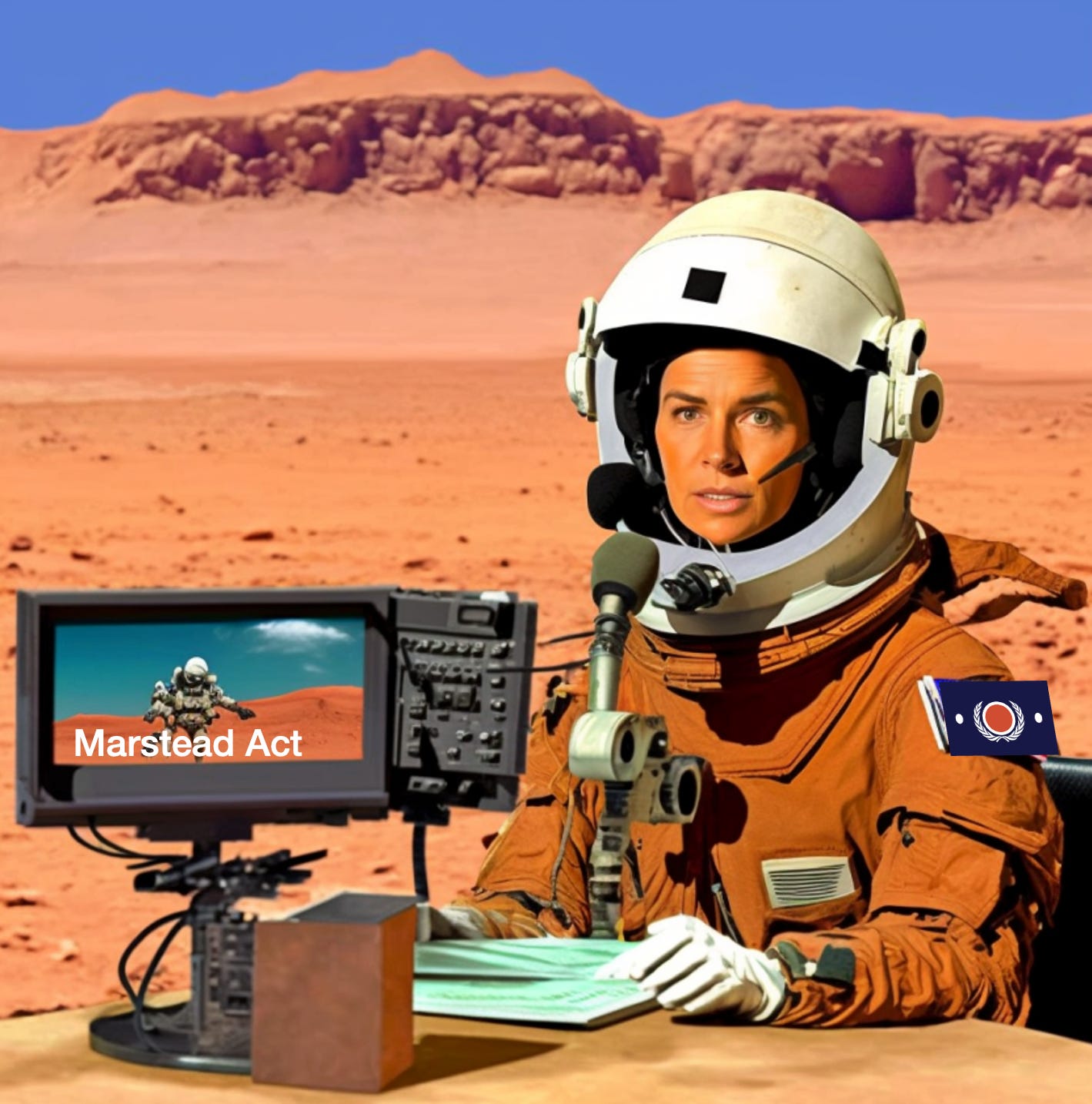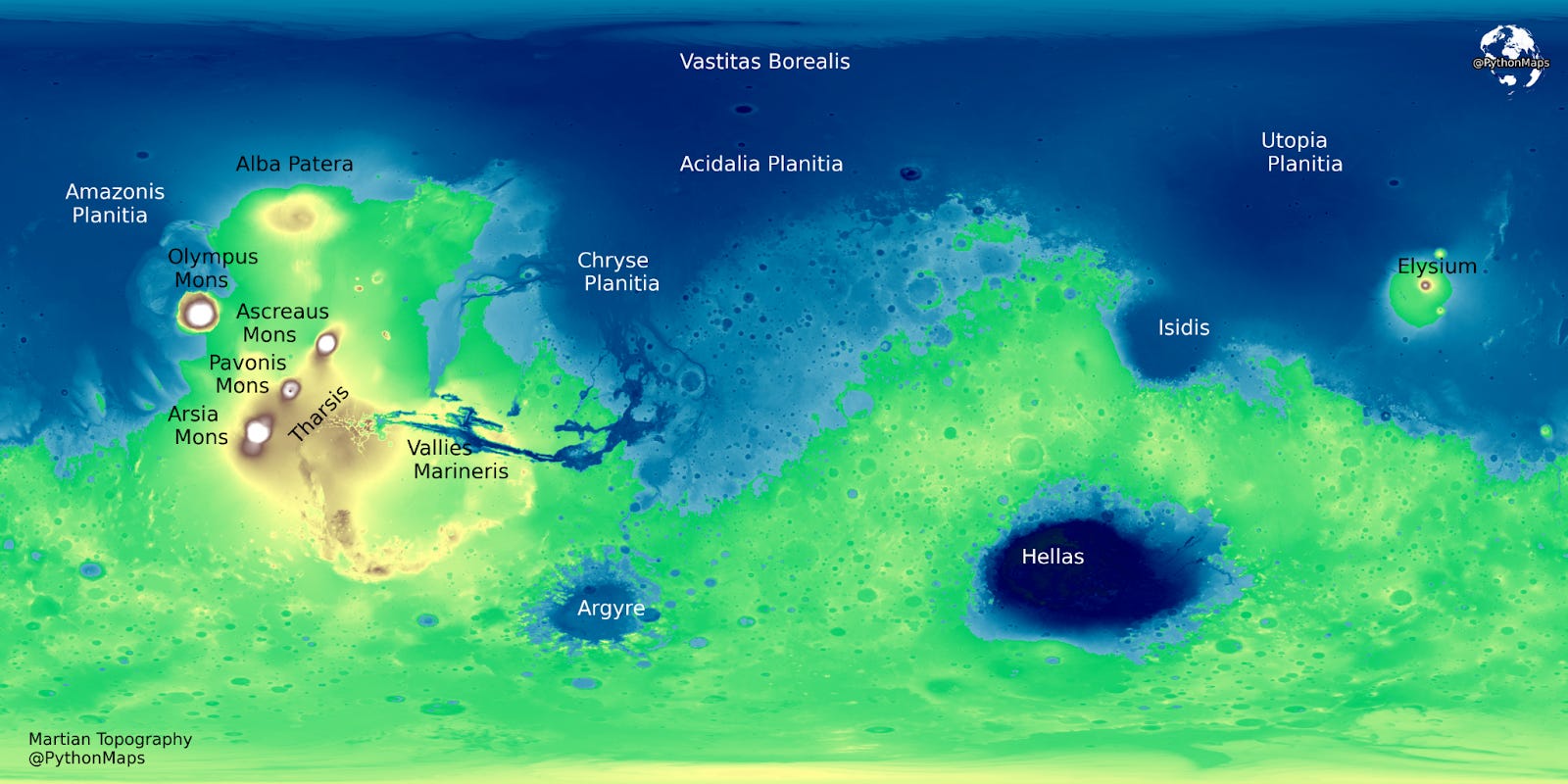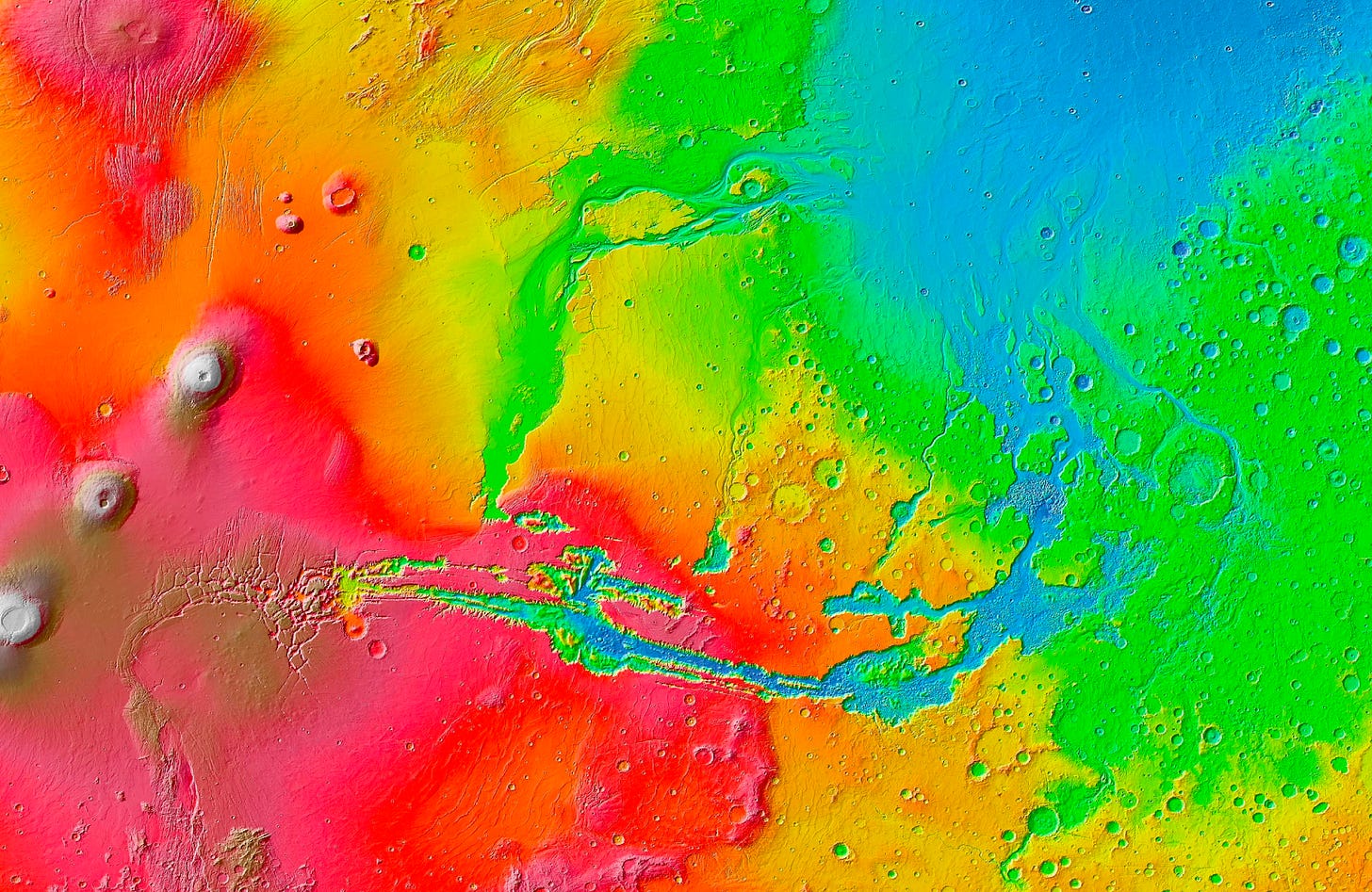What Is the Best Real Estate on Mars?
TV Anchor: The Martian Confederation Is Now Accepting Applications for settlers. 100 acres for families that move to Mars. Free passage for four-year tours of duty.
OLIVIA: Hey Dad, I’m thinking of doing a Martian tour next year. Where should I go?
This question throws you 20 years back, to 2080, when you did your own two-year Martian tour. You had been thinking about it since 2023, when you read an article about future Martian real estate. After that, you followed all the details of Martian terraforming, which picked up steam after humans discovered Artificial General Intelligence (AGI). AGI was able to solve fusion, unlocking near infinite free energy. It also figured out nanotechnology. Both of these together enabled the use of massive resources like ammonia and water from Saturn’s moon Titan, and the creation of the artificial constellation ERISED, a billion space mirrors to heat the planet. This accelerated the terraforming of Mars, which took just 50 years.
Now that you’re 130 years old—sprightly as ever thanks to AGI solving aging—you look at your daughter showing you a map of Mars:
YOU: Honeybear, this is a map of Mars before terraforming!
OLIVIA: Oh, so what does Mars look like now?
YOU: This is a map of the land and seas.

OLIVIA: So the north of Mars is all sea, and the south is all land?
YOU: Precisely! Isn’t it crazy? And you won’t believe how that affects the planet.
OLIVIA: But hold on, this all looks pretty brown to me. Is it all a flat desert?
YOU: Ah, right. Forgive me. Here’s a map that will help you read Mars.

OLIVIA: Wow! These colors are amazing! Are these the colors of Mars?
YOU: No, this is an altitude map. It helps you understand where things are on Mars. For example, look at this red area here. It’s called Tharsis.
OLIVIA: Are these… volcanoes? I thought Mars didn’t have tectonic activity anymore.
YOU: It still has, a bit. And look at that: three volcanoes in a line, and to the northwest, the biggest mountain in the entire Solar System! It’s called Olympus Mons. If you remember from your Greek mythology classes, Olympus was the highest of mountains, where gods lived.
OLIVIA: Is that where you stayed when you went there?
YOU: No, but I landed on Pavonis Mons. This is where the space elevator was anchored, because it’s quite high, and the city could be shielded from the Sun inside the volcano’s caldera.
OLIVIA: Why did you need protection from the Sun?
YOU: You know Aegis right? It’s a nuclear magnet between the Sun and Mars. It creates a magnetic field that deflects solar winds. It was only finished 10 years ago. When I was there, we still had to shield ourselves from the Sun.
OLIVIA: So if you didn’t live there, where did you live?
YOU: Here, in Yuma, close to the delta of Valles Marineris. The location was picked because it’s close to the delta so had access all the way to the Tharsis region, it had a natural port from an old crater with a deuterium refinery, and freshwater from another crater close by.
OLIVIA: Why not Valles Marineris itself? It looks more protected.
YOU: Yes, but it’s a massive canyon! 5 times longer than the Grand Canyon (4000km long), 7x wider (200km) and 4x deeper (7km). You can’t really access it for transport.
There are ports that move goods up and down the elevation, but it’s expensive and time-consuming. Only relevant for the mines of silver and palladium in Tharsis.
OLIVIA: I was told the Hellas Planitia was a great place to go, without too much rain.
YOU: Yes, that’s because it’s so low that the pressure was highest there when they were terraforming it. But now it’s full of water, so you don’t get that benefit. Plus, it’s freezing! It didn’t matter when the atmosphere was so light, but now it does. And remember that the southern winter there lasts 6 months! ERISED doesn’t focus its heating mirrors there. With that cold and lack of light, I don’t think much will grow there at all.
YOU: So you probably want to live along the northern coast.
OLIVIA: What about the rains?
YOU: Bah, they can’t be that bad.
OLIVIA: Yeah that’s what Elaia told me you’d say. She reckons Millennials like you always insist on models of Mars from before it was terraformed. But didn’t you hear the latest news about the rains? It destroyed a couple of coastal cities!
YOU: I think that’s exaggerated. Mars is like the Earth, it rotates eastwards, so the main winds, the Trade Winds, blow westwards.
YOU: This means that these regions are well irrigated, but notice the winds can’t load too much water because the seas are pretty small there.
OLIVIA: That’s such a Western-centric view of Mars! You have to think about the monsoon! Why do you think the dust storms are stopping?
OLIVIA: It’s because of the monsoons! During the equinoxes, the southern continent heats up so much that the air goes up, sucking in the moist wind from the sea. And since the ocean is so massive, the winds are brutal and full of moisture.
OLIVIA: You end up with torrential waters along the coast. It’s already hard on Earth. Do you really want me to go through something 10 times worse on Mars, without help or support?
YOU: Maybe you’re right. OK so let’s make a map of all the places that are going to be bad in the future for Mars. That way not only you can go to the best places, but we can also buy some land there.
OLIVIA: You’re such a capitalist! I don’t want to do it for the money, I just want to push the boundaries of humankind!
YOU: I used to think like that… Then I went to Mars. I guess you need to go through it yourself. OK, let’s make that map to pick your destination.
OLIVIA: I like this. Near the equator for warmth (which also happens to be near the coast), not too high on Tharsis (too cold), not too close to the coast (brutal monsoons)... I can do my research on these areas to see which one has the most opportunity right now. I heard we still need to be careful with tsunamis from ammonia asteroids, and I’d like to be near one of the megamines.
I hope you enjoyed this week’s article. The goal is not to be precise—there’s still plenty that scientists don’t know about how Mars’s atmosphere will react to terraforming. We’re not even sure how terraforming will take place, if it ever takes place.
These are my goals:
Acquaint you with Martian geography, so that next time you see a Martian map, you understand it.
Illustrate how the climate processes that happen on Earth are the result of physical systems. Once we understand them on Earth, we can apply them on Mars, but also on Earth itself, to understand why it is the way it is.
This is important, because if we see our world as the result of systems, nationalism becomes weaker. We’re not who we are because we’re better, but rather because we happen to be like this.
Illustrate how hard it will be to terraform Mars, which means we need to take care of our world.
Highlight that two upcoming technologies might completely upend how we think about the universe. Today, terraforming Mars seems impossible. But an AI that can solve any problem easily, coupled with near-infinite energy, would accelerate everything so much that we will have to change the way we think. Terraforming is a grandiose example.
Which highlights the importance of multidisciplinary people who have enough knowledge across industries to see their interaction. This is what Uncharted Territories is trying to do.
If you liked this article, share it with others. If you’re not subscribed yet, do so!
Later this week, in the premium article, we will go deeper on some aspects of Mars that I skimmed over, such as:
Why are there volcanoes on Mars since it doesn’t have tectonic plates?
Why is there one megaocean and one megacontinent?
Is there enough water on Mars or will we need to bring some more somehow?
Will it really look like this?
I’m working on other articles on this series. Some questions I’m exploring right now:
What would be the economic value of terraforming Mars? What would be the driving force?
What are the flaws in Musk’s current plan to create a city with one million inhabitants by 2050?
Where would we live on Mars before it’s terraformed?
What political systems will emerge on Mars?



















Brilliant! This really captures what I love about UT. Technological optimism and a vision for the future based on abundance is the only antidote I can see to the ills of late modernity. We humans have innovated ourselves out of every jam we've encountered so far, from the end of the Pleistocene climate of central Africa for which we are evolved, and the extinction of the megafauna we hunted, right up to 'peak oil'. Banish the fear and histeria of the social media driven endless 'now' and take the long view!
I really like this new format! Very fun and educational read, does a great job of sparking my own imagination to start thinking about this problem space. Feels very on brand for UT. Shouldn't replace the more detailed articles of course but I'd love to see more like this, especially as the first in a series.